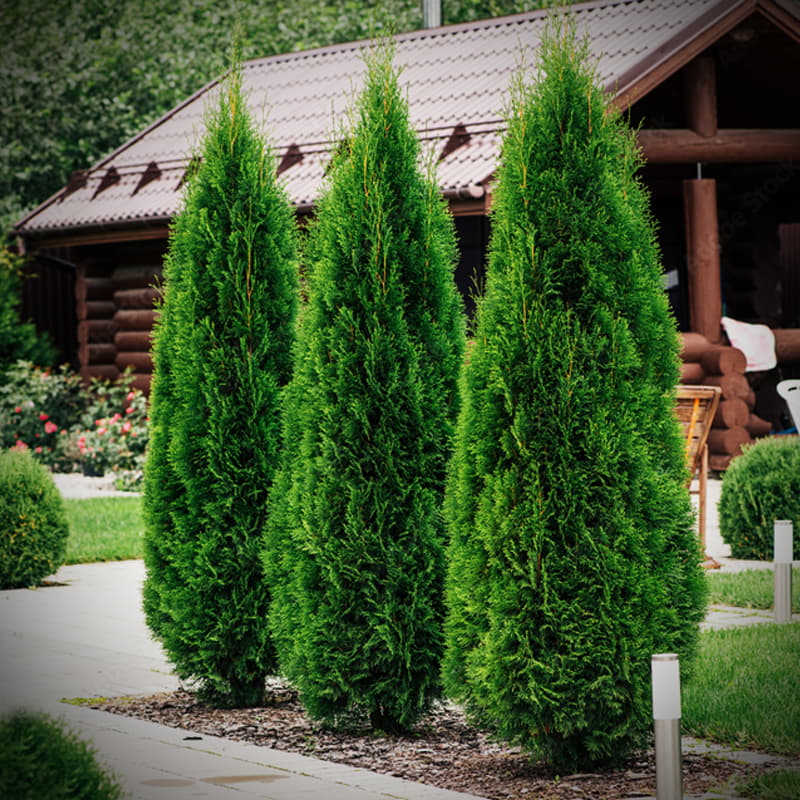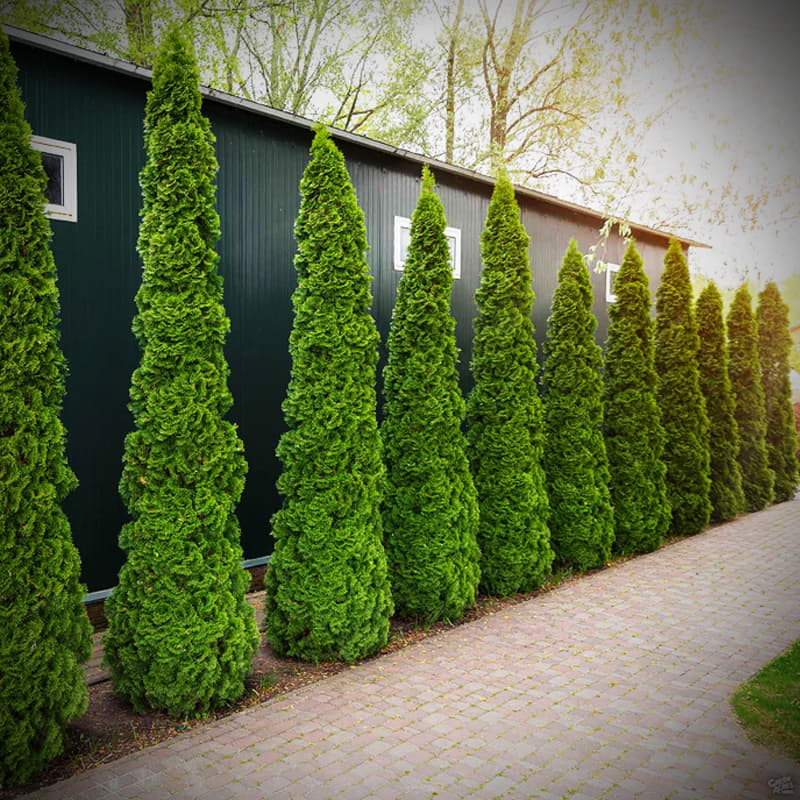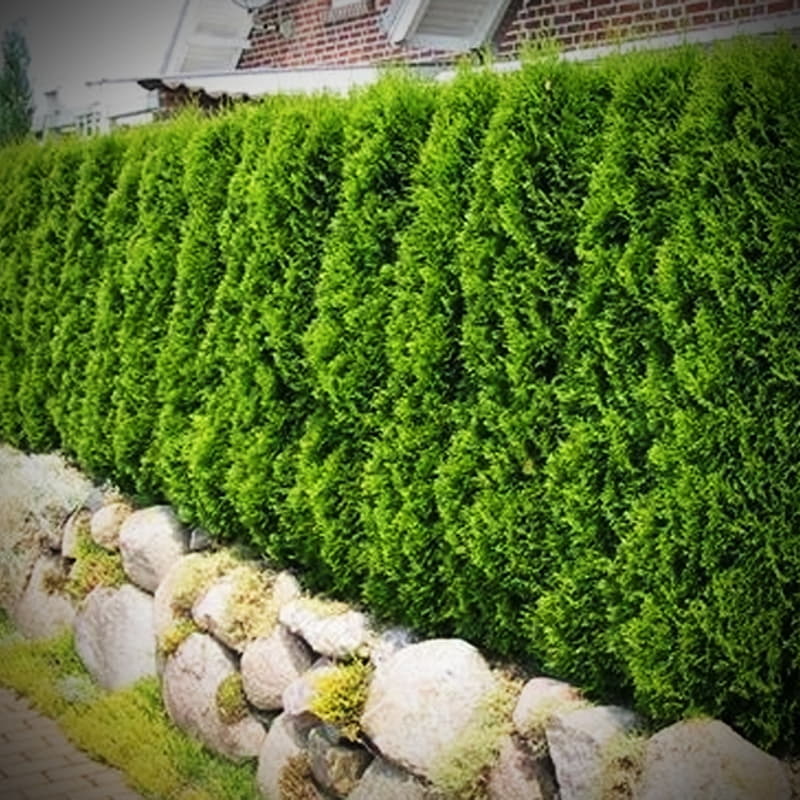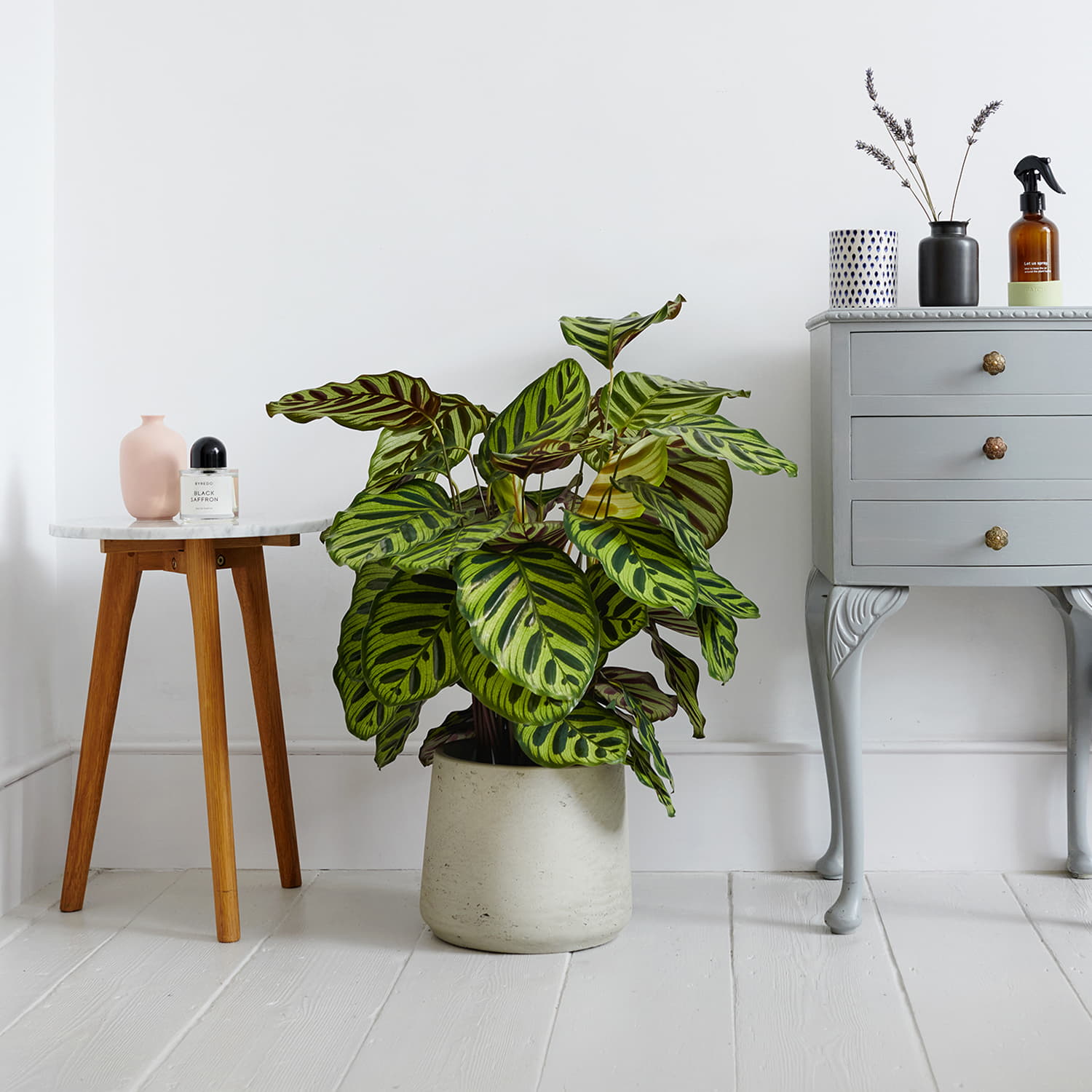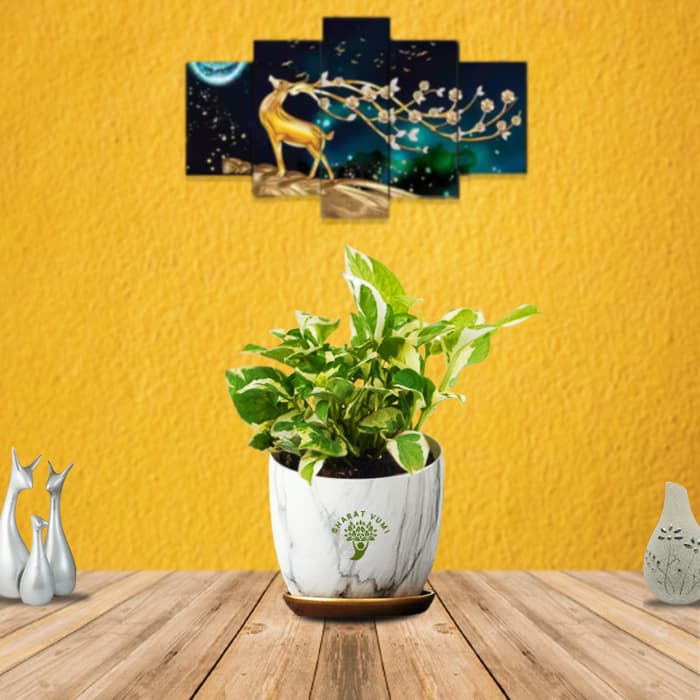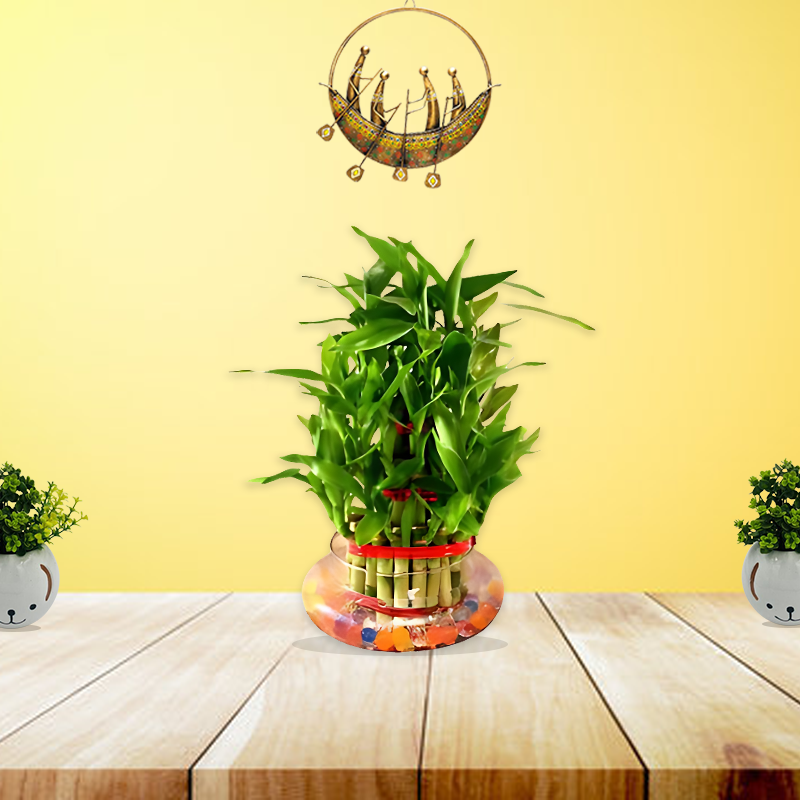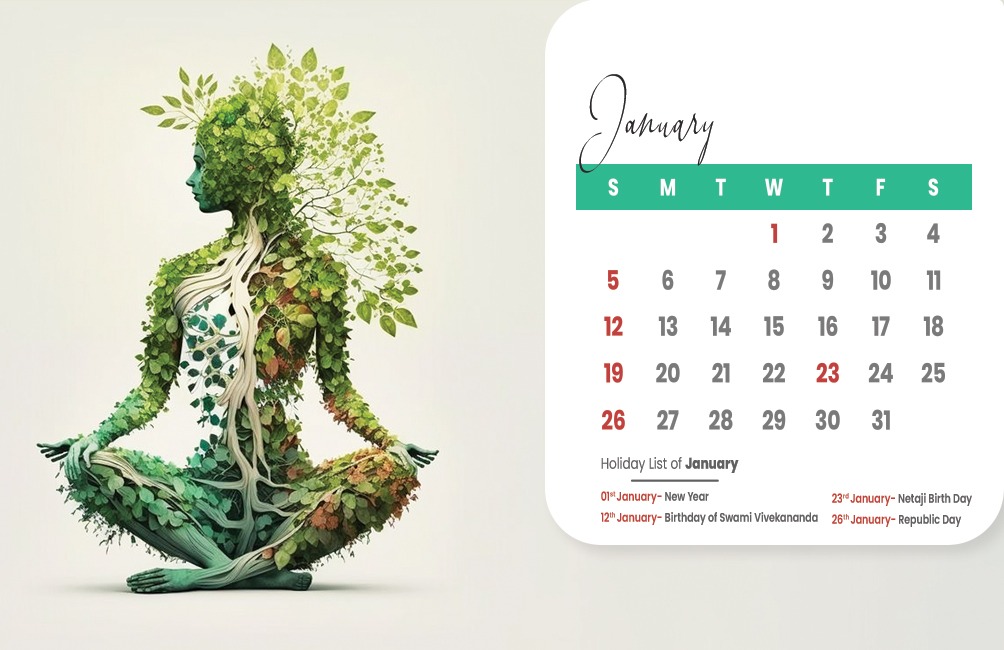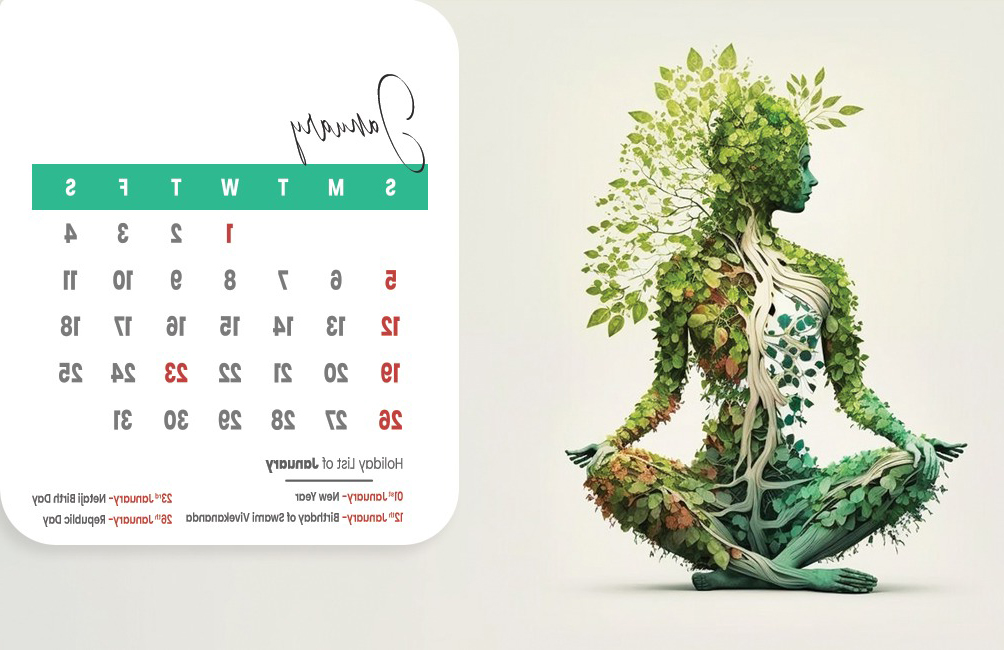Image(s) are for reference. Actual product might vary in some aspects like shape, size etc, from the one given in the image(s). However, we ensure what you get is close to the image(s) and of high quality. Our target is to deliver a healthy and well built plant. So relax after ordering and wait for an excellent delivery from Bharat Vumi that will bring smile on your face.
Plant Height- 8 inch/ 2 feet
Spacing- Spacing between plants depends on the height of the hedge, you want to maintain. For a low height hedge (up to 4 feet height) a spacing of 1.5 to 3 feet is maintained generally and for taller hedges (above 4 feet height) a spacing of 3 to 6 feet is maintained.
Description:
Common Name- Eastern White Cedar/ Arborvitae / Thuja/ Patajhau
Scientific Name- Thuja occidentalis
Family- Cupressaceae
Origin- North America
and parts or Eastern Asia
Thuja occidentalis,
commonly known as Eastern White Cedar or Arborvitae or Thuja, is a popular
choice for hedges. This evergreen shrub features dense foliage of flat,
scale-like leaves that provide year-round privacy and serve as an effective
wind barrier. Its compact growth habit allows for easy pruning and shaping to
create formal or informal hedges. Thriving in various soil conditions and
sunlight levels. With its
vibrant green color and consistent foliage, it adds visual appeal and structure
to any landscape, making it a reliable and attractive choice for hedge
plantings.
To manage a Thuja hedge effectively-
1. Prune regularly to maintain shape and promote dense
growth.
2. Water consistently, providing adequate moisture without
overwatering.
3. Apply balanced fertilizer during the growing season to
nourish the plants.
4. Control weeds and ensure good air circulation around the
hedge.
5. Monitor and address common pests like bagworms and spider
mites. Bagworms are brown caterpillars which feed on leaves and branches of Thuja.
Cone shaped bags hanging from the branches and defoliation of Thuja indicates
bagworm infestation. Remove and destroy the caterpillar or apply bacterium bacillus thuringiensis to control this
pest.
6. Watch for diseases like cedar rust (orange or rust
coloured spot, cause defoliation and weaken the affected tree) and root rot,
and take appropriate measures. To control cedar rust remove and destroy
infected plant parts, improve air circulation, apply mancozeb or chlorothalonil.
7. Provide well-drained soil and full sun to partial shade exposure.


